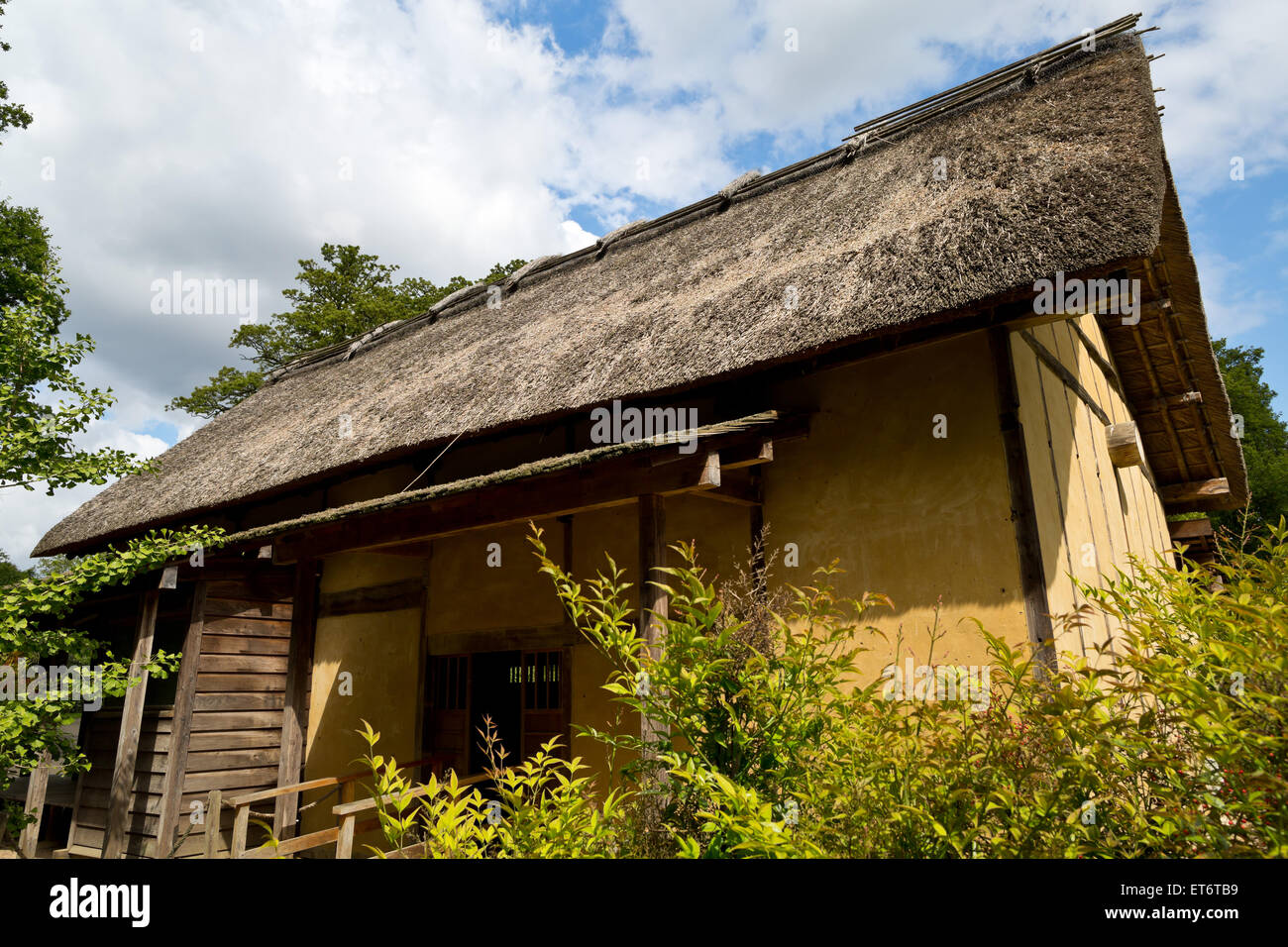Table Of Content

It has completed 600 so far, 300 in the last year, spokesman Naotaka Ushigome said. Like many Japanese, he wasn’t aware of the possibilities a decade ago. About 87% of the homes sold in Japan each year are new, government data show. That’s the reverse of the United States, where 85% of sales are of existing homes.
Floor Plan B
Because the provide effective security while allowing air and light to pass through, renji are used for sliding doors as well as windows. The lattice windows seen in the white plaster second-storey walls of Kyōto’s traditional machi-ya houses are known as mushiko-kabe. The tatami mat is one of the most essential features in a traditional Japanese house.
Minka Summit returns for third year of home design, talks and more - The Japan Times
Minka Summit returns for third year of home design, talks and more.
Posted: Tue, 16 Apr 2024 07:00:00 GMT [source]
Material

The lifestyles of Japanese people have greatly changed since the Second World War, especially as a result of the ensuing period of rapid economic growth. Minka parks where minka were transferred to and restored were constructed in many places in order to pass traditional Japanese culture down the generations. Old minka are preserved and open to the public as materials to study history.
Bill Thomas
The wide veranda (engawa) has been lacquered to protect the wooden floor from rain. Fifteen sliding storm shutters (amado) can be taken out of their closet located at the end of the veranda, and pulled into the rails to protect the large drawing room from cold, rain and snow. Constructed more than a hundred years ago, the amado have not warped and can still be easily pushed one after another, like a train of cars along the rails. Koichi Sato is the 11th head of a family of landowners in Akita, in the northern part of Honshu. Winters here are severe, and everything mantles over with thick snow from November to April. While the exterior and parts of this imposing edifice are built to withstand extreme weather conditions, parts of the interior have been design in the delicate aristocratic Shoin style.
Interior Elements of the Traditional Japanese House
The tokonoma originated in the Muromachi Period (1336 – 1573), when the lord of the house would sit in a separate section of the room with a raised floor when receiving his vassals. Even nowadays, the highest-ranking seating positions in a reception room are those closest to the tokonoma. The kamiza or “seat of honour” is to sit facing the room with one’s back to the tokonoma, just like the lord and master of centuries gone by. The engawa is an open, timber-floored corridor or veranda constructed around the outside of the house.
This highly common floor is not only for comfort but also for design. Most importantly, they promote Japanese traditions like sitting “seiza”, praying, and sleeping on the floor. As you’ll see on the majority of Minka’s, a fully functional, wrap-around hallway of sorts. Not only constructed for the enjoyment and protection from the outdoor elements, but also used in a more traditional sense as a divider between the exterior and interior of the Shoji.
Rooms in a Traditional Japanese House
This $13 Million Japanese-Inspired House in Beverly Hills Has a Floating Tea Room - Yahoo Singapore News
This $13 Million Japanese-Inspired House in Beverly Hills Has a Floating Tea Room.
Posted: Sat, 27 Apr 2024 14:08:45 GMT [source]
After removal, shoes are put in the getabako—a cabinet that derives its name from geta, or wooden clogs, that Japanese people once commonly wore. Gassho- zukuri, or “constructed like hands in prayer,” is characterized by vast roofs. They were constructed with steep, thatched roofs that resembled Buddhist monks’ hands pressed together when in prayer.
Wall Street swings after Fed keeps interest rates high, downplays odds of a hike
The traditional minka farm houses line the Shogawa River Valley in the picturesque mountains that span Gifu and Toyama prefectures. The historic area was declared a UNESCO world heritage site in 1995 and is a wonderful place to visit when in Japan. Typical examples of Japanese architecture are wooden structures slightly elevated from the ground with either tiled or thatched roofing. Thin sliding doors were used instead of walls to adapt the interior space for different occasions. People would usually sit on the floor or on cushions; chairs and tables were not commonly used until the 20th century’s Western influence. Minka, the traditional farmhouses of Japan, represent a wonderful but fast disappearing Japanese architectural style.
This ceremonial outer gate is in the shape of a warrior’s helmet, and is roofed over with ceramic tiles. Such gates were symbolic of the status and sophistication of the owner. Traditional Japanese housing is one of the most unique architectural pieces of art that there is.
The architectural design developed through the years to withstand the elements. The gassho-zukuri roofs were timber-framed–made without nails–to allow for a much larger attic space, to cultivate silkworms, for example. Gassho-zukuri farmhouses, some which are over 250 years old, still stand today in the Shirakawa-go and neighboring Gokayama regions.
Many people sleep in beds, but traditional futons are still popular. A 2013 survey by Nifty found that 50% of respondents slept on futons laid out on tatami mats. During the daytime, futons can be stored in cupboards, making more space available in rooms. It is common to hang them outside to air on sunny days, making them fluffy and comfortable to doze on.

Traditional Japanese housing, or Minka’s, has deep roots in Japanese history and culture, but also provides a means of art, architecture, and design. Lastly, it provides functional and practical living spaces for those who choose to live in them. A uniquely constructed Minka typically involves the use of Wagoya; a method of carpentry performed without the use of nails.

No comments:
Post a Comment